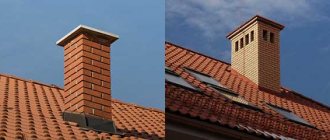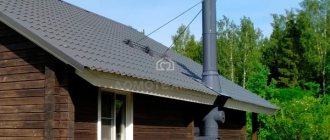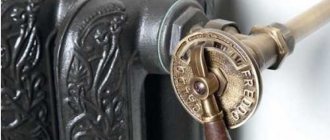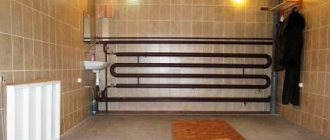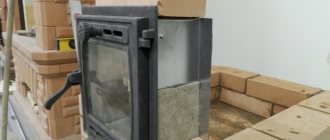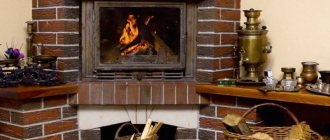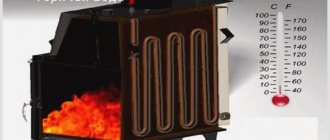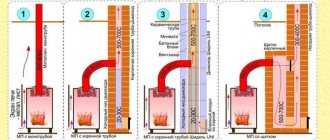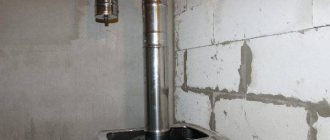Convection ovens are very popular these days. The most famous is Buleryan - a wood-burning stove from the Canadian company of the same name, capable of heating a room regardless of its size and purpose. A correctly selected chimney for Buleryan will ensure maximum efficiency of the stove. It also needs to be properly installed and maintained in the future.
For such a stove you need to choose the right chimney
Popular manufacturers
After you decide what material the chimney is suitable for your Buleryan stove, the next step is to choose a manufacturer. Eight companies are leaders. Let's look at the features of each of them.
- Schiedel . This German company has existed since 1946. Offers only two types of chimneys for Buleryan - steel and ceramic. All models are suitable for apartment buildings, private 1-2-story cottages. Also in the range you can find pipes for connecting to existing brick chimneys. The company provides a thirty-year warranty on its products.
- Bofill . Spanish manufacturer of chimneys, one of the oldest on the market (existing since 1892). It specializes in AISI 304 and 316 stainless steel pipes. The company guarantees thermal and mechanical strength, all products undergo vibration testing and thermal shock testing. The chimneys will remain sealed when the stove heats up to 700 degrees.
- Baltvent . Another company specializing in the manufacture of stove chimneys made of stainless steel (sandwich with insulation). The catalog contains models for multi-apartment high-rise buildings, cottages, and industrial facilities. The production plant is located in Kaliningrad. The steel used by the manufacturer is AISI 316L and AISI 304, which are considered the best in terms of anti-corrosion properties and durability.
- Teplov and Sukhov . The company offers pipes for Buleryans made of a special heat-resistant material - steel with the addition of molybdenum and titanium. This chimney can withstand very high temperatures (up to 1000 degrees) and provides high efficiency. The company's catalog includes systems for residential stoves, as well as systems suitable for industrial buildings.
- Jeremias . German company with the main plant in Bavaria. Additional production facilities are located in the USA, Poland, Russia, Spain. In addition to standard steel structures, it offers customers devices for collective connection - installation of chimneys to which several stoves can be connected at once.
- Vulcan . A Russian company producing double-circuit sandwiches, oval steel systems, simplified single-wall chimneys. Different models of steel are used in production - AISI 321, 316 L, 310. They differ in characteristics and cost, so the client can easily choose an option that is suitable in terms of price-quality ratio.
- Effe2 . An Italian company producing durable ceramic chimneys. A special feature of Effe2 products is their light weight compared to ceramics from other companies. Another feature is complete protection against condensation and, as a result, a long service life. The manufacturer provides a 40-year warranty on its chimneys.
- Tona . The German corporation makes only ceramic chimneys, ideal for Buleryans. It works using a patented technology that makes it possible to obtain a material that is resistant to increased heat and has a low weight. The products are quite expensive, but this is compensated by their long service life. The manufacturer assures that repairs and replacement of chimneys for stoves will not be needed for at least half a century.
Design calculation
It is necessary to calculate the chimney before installation. It is worth determining what diameter the pipe will be, what material it will be made of, its length and other important characteristics.
You need to think about the method of removing the chimney from the building, as well as the option of connecting to the stove itself. When calculating, it is worth remembering:
- The chimney for Bullerjan stoves must be at least 3 m long. Only then can you be sure of high-quality draft.
- It is worth considering the location of the pipe in relation to the roof ridge.
- Installation must be carried out taking into account all recommendations of the chimney manufacturer, because inaccuracies can cause low thermal output and high fuel consumption.
Cost of a complete chimney kit
It will not be possible to name a single price, since the cost of different types of structures will vary greatly. It depends on:
- chimney material,
- modifications,
- length,
- diameter,
- the need for additional accessories (angles, adapters, fasteners),
- presence of decorative elements.
We can only give an average price: a steel pipe will cost 18,000-25,000 rubles, a ceramic pipe will cost 42,000-65,000 rubles. Exact prices are calculated only after drawing up project documentation.
Advantages
The classic version of the Breneran stove is an all-metal structure that includes a large number of pipes that create forced convection.
Therefore, the heated air quickly heats up and spreads throughout the room.
And due to its clever design, the stove manages to take air from under the floor, warm it up in a matter of seconds, and then direct it upward, creating circulation. On average, the outlet temperature is up to 150 ˚С
It is worth noting that the burning time of one bookmark in such a stove will depend on many factors. So, it could be:
- firewood quality;
- total height of the chimney;
- in what mode the stove is operated;
- various nuances of the Breneran installation.
So, for example, some bathhouse attendants manage to provide heating for up to 12 hours in a row in one load. Although at the same time, it will not be possible to provide high-quality heating. It is most correct that with one load the furnace operation lasts an average of 7 hours. This will allow you to achieve maximum effect.
The main advantages of such furnaces are:
- high productivity (about 80%);
- greater efficiency;
- possibility of heating in a short period of time;
- versatility, allowing use both in the house and in the bathhouse;
- independence from stationary fuel sources (gas, electricity).
Considering the simplicity of the entire design of such a stove, in most cases it surpasses its main competitors in the form of gas boilers for private homes in many respects.
The most important thing is that it does not release any harmful substances into the air. In addition, an important point is that the design of such furnaces has been tested by time.
How to properly install a chimney system?
Even the most expensive and correct chimney for Buleryan will not cope with the assigned tasks if the rules were violated during installation of the structure. The following lists the main installation features.
External installation of a chimney
Installation work is carried out according to the following plan:
- A hole is created (in the roof with a vertical outlet or in the wall when the pipe is led out along the facade of the house).
- The chimney elements are assembled and fastened together.
- The distance between the walls of the hole and the chimney device is filled with non-flammable insulation.
- After pulling it out, the structure is attached to the wall or roof with clamps.
- When the chimney system rises above the roof by more than 2 meters, a stretcher is installed to protect from the wind.
If you decide to route the pipe through a window, then cutting out holes is not necessary. This is convenient, but the appearance will not be neat
Options for exhausting the chimney outside
.
In-house chimney installation
When arranging a roof cut, it is important to take into account that the pipe can heat up to 50-60 degrees, and the steam at the exit can have a temperature above 300 degrees. This means that all nearby wall and roof materials must be heat-resistant, and there should be no gas pipes or fuel storage nearby. Between the chimney device and the roofing materials you will have to make a penetration with a fire gap of 25-30 centimeters.
Don't make mistakes, there are consequences
Connecting a chimney for Buleryan
To complete this installation step, you will need an adapter. The role of the adapter is performed by a standard stainless steel pipe. After all installation work, a traction check is required. This is done using open fire. In the oven, open the damper and bring in a lit match or piece of paper. The flame should be drawn steadily into the firebox, the smoke should not go into the room, but should be directed strictly through the chimney.
Adapter for connecting the chimney to Buleryan
Installation option 1
Installation option 2
Device
These types of fireplace stoves consist of a massive outer casing, the thickness of which is 3 mm, as well as a heat-resistant firebox made of 5 mm steel. In addition, the package includes an additional water tank made of stainless steel.
The operation of such a device follows the same principle as that of a gas generator. After solid fuel burns, the resulting gases enter special ejectors for more complete combustion.
It is due to this that it is possible to achieve such high efficiency indicators, about 80%. In addition, such furnaces can operate in several modes. The first is fast heating, and the second is gasification. Accordingly, each of them performs its function, one allows you to quickly increase the temperature, and the second maintains it at the desired level.
It all happens as follows: special air ducts are put on pipes with a large diameter, which supply heated air to the required rooms. In addition, even cheap aluminum options that can withstand average temperatures can be used as these pipes. Due to this, even the smallest oven allows about 5 cubic meters of air to pass through it.
Features of the operation of chimney pipes
When using a stove, a number of questions may arise related to the operation of the chimney. Below are answers to the most common ones.
How long does a chimney last?
The operating time depends on the material of the chimney and the intensity of use. It also affects how often and with what the owner cleans his Bulleryan.
If you remove soot, remove condensation, and load the system correctly, then steel models will last 5-7 years, multilayer steel pipes - 12-17 years, ceramic chimneys - more than 40 years, brick ones - over half a century. Failure to comply with the rules for using the structure reduces the service life by three times.
Why does wind get into the chimney?
The wind blows into the chimney and interferes with the normal outflow of smoke when the rules for calculating and installing stove parts have been violated:
- The total height of the structure should be three meters.
- The chimney must rise above the roof by at least half a meter.
- All seams must be carefully treated with sealant.
If these rules are not followed, the wind will freely “walk” through the pipe.
Why does condensation appear, how to avoid it?
Water does not accumulate only in ceramic and multi-layer steel chimneys. In other cases, condensation cannot be avoided. It can be reduced by additional thermal insulation, which prevents temperature changes and the formation of “dew”.
If it is not possible to reduce the accumulation of water, then you need to wipe the outlet manually 1-2 times a month. Prolonged accumulation of water is dangerous for the chimney - the liquid mixes with substances from the smoke and corrodes the walls.
Why does soot accumulate, how to clean it?
When burning wood and other solid fuels, soot appears. There is no need to panic - this is a normal process, you just need annual cleaning (1-2 times a year).
Attention: mechanically cleaning the passage is prohibited, as scratches will appear, which will disrupt the operation of the chimney. It is safer to clean walls with chemicals.
It’s bad if soot formation occurs too quickly (when cleaning is required after 2-3 months). The problem may be:
- violation of tightness,
- horizontal pipes are too long (should not exceed 2 meters),
- using low-quality fuel for the stove.
Buleryan stove: advantages and disadvantages
Bullerjan is one of the types of long-burning stoves that operates on the principle of convection.
The design was developed by Canadian inventor Eric Darnell in 1975, after which the rights to the patent were purchased by German businessmen who launched serial production of stoves under this brand.
The stove combines the functionality of a standard wood-burning firebox, air heater and gas generator. Buleryan is able to work in two modes:
- Kindling. More air is supplied to burning wood, which contributes to its rapid combustion and accelerated heating of the room.
- Gasification. The oxygen supply is reduced to a minimum. The firewood gradually smolders, and the room warms up more slowly. In this operating mode, one stack of firewood will be enough for 10-12 hours of continuous operation.
The power of such a furnace depends, first of all, on its dimensions. It can be enough not only to heat a private home, but also for large industrial buildings and warehouses.
Among Buleryan's shortcomings, we note:
- Ability to work exclusively with wood.
- High soot content in exhaust gases.
- Soot also forms condensation in the chimney from a mixture of tar, water and soot. After a long period of inactivity, there will be an unpleasant odor when burning.
- Some experience will be required to operate the oven correctly.
Making a chimney with your own hands
Experts do not recommend making pipes for Buleryans yourself unless you have the appropriate knowledge and experience. This process is not easy and responsible. If you still want to try to install a chimney yourself, then we will briefly describe the difficulties that you will encounter in the process.
Materials and tools
It is difficult to assemble and install a chimney yourself. You need to purchase a large set - steel pipes for the Buleryan stove, tees, plugs, clamps, deflectors, floor dividers, outlet bends, brackets, etc. Before purchasing, you must make all calculations of the length and diameter of all parts. The picture below shows an example of what may be needed to install a steel chimney:
Attention: you can only assemble and install steel systems for Bulleryan yourself. Ceramic chimneys are too complex; it is better to entrust work with them to specialists.
Step-by-step assembly instructions
After all the parts have been purchased, you can begin assembling the structure and installing it. There are several options for collecting external and internal chimneys.
To connect parts, welding and pressing of seams are used. For precise convergence, it is necessary to make recesses at the ends of the pipes for nozzles, on which elements of a smaller diameter are “placed”. The two assembly methods are shown in the picture below:
The space between the parts is filled with non-flammable fiber insulation. Tip: to simplify the procedure, it is recommended to purchase a ready-made modular chimney kit. This will eliminate the need to independently select individual pipes and related accessories, and will protect you from errors in calculating the diameter and length of individual elements.
Connection
Setting up a stove assembled and installed by yourself completely coincides with the process of connecting the finished system. As was described earlier in the article, the main requirement at this stage is to check the tightness of the seams (the chimney should not allow smoke to pass through) and the correct draft. The latter is checked by opening the stove shutter and holding a burning match (smoke should not go into the room, but should be clearly directed upward; the flame should be even, without fluctuations from the wind from the chimney).
The best electric kebabs in the mid-price range
The price for such electrical appliances usually starts from 2000 rubles. This is somewhere between inexpensive and premium options. They hold approximately 1.5 kg of meat and can cook not only it, but also fish, mushrooms, and grilled vegetables. These kebab makers are inferior to more expensive offerings mainly only in functionality. The products described in this category are recognized as the best in terms of build quality, ease of use and reliability of use.
Kitfort KT-1403
...We tested Kitfort KT-1403 and were convinced that it helps to cook shish kebab no worse than over charcoal. This effect is ensured by an infrared heater, which is responsible for uniform cooking of meat... Expert opinion
This electric kebab maker has a somewhat unusual appearance compared to other products in the rating. It comes in a rectangular shape, but is very convenient to use. There is enough space inside the case; 5 skewers, completely covered with meat, can easily fit here. During cooking, you can simply turn them for better roasting of pork, chicken and other products, since there are plastic holders on top that do not heat up. Very usefully, there is also a handle on the side for carrying the product. Even at high speed, the structure is stable on the surface due to reliable support.
Advantages
- Easy to disassemble for cleaning;
- Easy to wash;
- Does not heat up;
- Automatic rotation of skewers;
- You can cook up to 1.5 kg of kebabs at a time.
Flaws
Short power cord.
Energy Neva-1
This is an almost fully automated electrical appliance for preparing barbecue at home. Uniform frying of the meat is guaranteed here thanks to the automatic rotation of the skewers, on which, by the way, you can thread more than 1.5 kg of meat. There are 5 pieces in total in the set. with the optimal size, so this product will be useful even in a large family. It is easy to care for due to its removable parts. There are almost no drawbacks here, even the considerable energy consumption does not bother users, for which the electric kebab maker can safely be given second place in the rating.
Advantages
- Reliable protection of the heating element;
- Free rotation of skewers;
- Large flask;
- Does not give off a strong odor, you can safely fry right in the apartment;
- The design is washed easily and quickly.
Flaws
Fat sometimes comes out of the flask, and it must be washed off immediately after cooking.
The Energy Neva-1 electric kebab maker has a power of 1000 W, and therefore it is not surprising that the meat is fried in it in 15-20 minutes.
Hydroelectric unit Kavkaz-2
This device is ideal for those who do not chase the pronounced smoky smell of barbecue. If it is very important, then, as a last resort, you can put 1-2 cherry branches in the flask, which enhance the aroma. The kebab maker has a red body, which can be easily removed if necessary. The design is stable on the surface thanks to durable legs. It is quite easy to wash, although it does not get so dirty due to the presence of a tray for collecting grease. As in all modern models, the skewers here rotate independently, which simplifies its use.
Advantages
- No need to baste the meat;
- There is no need to twist the skewers by hand;
- Good power of 1000 W;
- Cooking speed – 20 minutes;
- Easy to disassemble;
- You can load 1 kg of meat, fish, mushrooms at a time.
Flaws
- After cooking, you need to ventilate the room.
- Sharp edges on skewers.
conclusions
Potbelly stoves and buleryans are very convenient, functional and quite economical heating devices. Provided they are installed correctly and operating instructions are followed, they can last for decades, creating a comfortable living atmosphere in your home. In addition, modern heaters of this type are not just functional - they have an attractive appearance and will become a real decoration of any interior.
Video on the topic
(Total: 1 , average 5.00 out of 5)
Loading…
How effective is Bullerian at heating a garage?
Installing a Bullerian convection oven is completely worth it. The air is heated without a water coolant, which allows you to use the oven only as needed without fear of defrosting the system. Air heating begins immediately after the stove is lit.
Buleryan for garage
The simple operation of the stoves is also explained by the wide range of fuel options. Buleryan works on firewood, pellets, shavings, sawdust, wood dust and even paper. It is prohibited to burn with coking coal and liquid fuel.
Installation site requirements
If you make a mistake when installing such a heating device, this may cause damage to the building or a fire. Therefore, you must follow the instructions carefully. It is best to install the buleryan lower. This is how the oven heats the cold air, which enters through the bottom of the tubes located at the edges of the body.
It is prohibited to place the stove on a wood or plywood floor, as this violates fire safety regulations.
Buleryan is most often installed in private homes. A private house is a secluded place for the whole family. Warmth, comfort, fresh air in the yard are the key to a healthy and good atmosphere in the family. Some people like to spend time passively, but residents of houses usually choose a more active position.
The vegetable garden is the main place of activity for all residents of private houses. When harvesting every year, you must remember that the soils are depleted and must be fertilized periodically. You can buy fertile soil price in the Agrogrunt online store. It is fully prepared for planting both in greenhouses and in open areas.
Installation of equipment on the floor can only be carried out if there is a certificate of use. The stove must have fireproof legs that cannot be removed. It is also necessary to have a catch pocket in front of the ash pan.
As a base, you can use a steel sheet with a height of at least 1.5 mm. It should be on an asbestos pad. The optimal radius is about 1.2 m in relation to the doors. The stand should protrude 25-30 cm along the edges of the stove. Place the back side of the buleryan 1-1.5 m from the wall. If you first cover it with fire-resistant plaster, you can reduce the distance to 0.8 m.
Safety
The fire safety rules state that the distance between the front door and the nearest objects should be about 1.25 m. The distance from the side or rear walls to the nearest objects is from 1 m. If the nearest objects are not flammable, you can reduce the distance to 70 cm.
If you are unable to maintain such distances, you can fence off the buleryan with fireproof plates. They can be galvanized or magnesite. The choice depends on your budget and capabilities. After all, not all stores have the entire range of products.
To attach a chimney to the boiler, first consider the ceiling cut. It must pass through the ceiling. To prevent moisture from entering the house, the place where the pipe comes from must be sealed with a roof.
The optimal height of the chimney is 50 cm. You can also adjust the height depending on the location of the pipe. The outer part of the chimney must be laid using sandwich elements.
They are thermo-pipes. You should also consider the part in which the ash will collect. This could be a revision or a tee.
What is better for the garage - a potbelly stove or a Buleryan?
To properly warm up a garage with a small stove, 0.025 cubic meters of firewood is enough. And this bookmark is enough for 8 hours of burning. Even if I fire the fire every day from mid-September to the end of April, the fuel consumption will be only 5 sq.m. Such fuel consumption is simply unthinkable for an ineffective stove.
Larger models will have a larger fuel reserve, but still, installing a Buleryan stove in garages is always a profitable solution.
Buleryan do-it-yourself drawings and photographs.
The basis was 60/40 mm profile pipes with a thickness of 3 mm; round ones could have been used, but there was no pipe bender at hand and I wanted originality.
Step-by-step instruction
Materials:
- Pipes;
- 4mm. 50x50 – 27 m;
- 2mm. 30x20 – 0.76m;
- 2mm. 40x25 – 2 m;
- Diameter 15mm – 0.6m;
- Diameter 95mm. (5mm.) – 1m;
- Steel – 5mm. – 3m2;
- Sheet metal – 100mm. – 0.1m2;
- Wire with a diameter of 10mm – 0.5m;
- Garage hinges – 2 pcs.
Step-by-step instructions for making Buleryan:
- We cut the pipe, which is 27 meters long, into 18 one and a half meter sections, from which we make pipes characteristic of Buleryan (two bends of 120 each).
- 15mm nozzles are welded into 4 of them. tubes (tube length – 15 cm).
- The pipes are folded together in the shape of the future Buleryan and secured by welding. Parts with nozzles are placed two on both sides (later they will act as a blower). Everything is finally boiled down.
- To make the gas afterburning chamber we use 5 mm. steel. We cut out 2 blanks (370x700 mm with a jagged edge 50x60mm to fit the pipe size).
- The parts are welded inside the contour formed by the pipes. Pipes with nozzles should be located in front of the partitions.
- Frame. From the same metal as for the afterburning chamber, we cut plates that will close the gaps between the pipes: 18 pieces for the middle part (400mm x 50mm). 36 pieces for all lower and upper spaces (350mm x 50mm).
- We cover the ends with two 6-carbon plates from the same 5 mm. metal (side 40cm). We make a hole in one of the plates for the chimney. It should be 85 mm in diameter. and located in the afterburning chamber.
- And a hole for the door is cut in the front plate. Approximately 25x25cm. We weld both plates into place.
- The chimney will be a 95 mm pipe, 50 cm long. A valve is installed in the pipe on a wire axis (similar to a throttle valve in a carburetor), with a quarter cut out.
- A pipe frame (40 x 25mm) is made around the perimeter of the door opening.
- We cut out two squares from 10mm metal. The first is 330mm, the second is 246mm. We weld the smaller square with a profiled pipe (40x25), so that it fits into the frame onto the hole for the door (see points 8, 10).
- The blower will be similar to the chimney, only the valve in it will not have a selected quarter. Pipe for 95, 140 m long.
- A 95 mm hole is made in the finished lid, and a blower is welded there.
- Canopies. The door is fixed (by welding) and at a distance of 40 mm from its top and bottom, 2 professional pipes with a length of 380 mm are welded horizontally. Where there will be awnings, the ends of the pipes should protrude 5 cm beyond the hatch. Garage hinges are welded to them.
- Constipation. You can make the lock yourself, or you can order it from a turner. After welding it to the door, the fixing welding is removed.
- All welds are ground.
- You can weld the legs.
Don't be tempted by narrow water pipes. For efficient operation of Buleryan, pipes of 50-70 cm are better suited.
Stand for buleryan
Buleryan needs to be installed on a special stand that does not light up when in contact with water. It is better if it is made of metal. The optimal height is 20-25 cm.
You can buy ready-made stands that are produced in factories. You can also build them yourself. A metal sheet or fire-resistant tile is suitable for this.
To install Buleryan, it is not necessary to build a special foundation. The basis can be:
- concrete screed;
- brick podium;
- floor, which is laid out with stone or tiles;
- a mixture of asbestos and cement. You need to put a metal sheet on top.
As mentioned above, the stand should protrude on the sides of the stove by 20-25 cm. In front and behind it should protrude by 0.6-0.65 m . Such structures should not be placed on wood flooring or other flammable materials. This could be life-threatening.
To ensure that the air constantly circulates and does not stagnate, you need to build a stand about 40-60 cm high. Brick, metal pipes or stone slabs can be used as materials to build the elevation. It is important that sufficient oxygen reaches the lower part of the apparatus. This will allow you to maintain the desired temperature. Also make sure the oven is stable.
Types of stoves for the garage: choosing the best option
In the garage, it is possible to install a variety of heating systems that operate on different types of fuel: liquid, solid, electric or gas. The main conditions are that the unit must have high efficiency, at the same time have low cost and low resource consumption. In addition, the device must be mobile and secure.
To heat a garage, various units are used, which differ in operating principle, type of fuel and operating features.
Long-burning wood-burning garage stoves. The operating principle of such devices is converter combustion of fuel. The unit requires professional installation, but experienced craftsmen can make it themselves. Firewood, pellets, peat, coal and other types of exclusively solid fuel are used as fuel. Gas and liquid flammable materials are not applicable. Additionally, installation of a chimney and insulation system is required. It belongs to the category of expensive devices.
Potbelly stoves for the garage. A compact, convenient and affordable option for a furnace that can be easily built independently using a basic drawing. The main disadvantage of potbelly stoves is the increased risk of fire.
Garage ovens for waste are the most economical option, operating on machine oil that has already spent its life in the engine.
The choice of garage furnace options on the market is very wide.
A brick stove for a garage allows you to receive soft heat for a long time, but subject to complete heating. Therefore, this option is suitable for people who work in the garage every day.
Infrared heaters. Such equipment is not suitable for metal structures and half-brick structures. Metal reflects poorly, and brick absorbs such energy, which leads to low efficiency of this type of heating.
Note! When installing a heating system, it is imperative to construct a high-quality and reliable ventilation system and chimneys.
